
Dorothy Dandridge
It is the perfect time to celebrate the life of a late, great legend, who lived from November 9, 1922 to September 8, 1965. I always love her work and the causes that she has advanced. Ahead of her time, she was a heroic trailblazer of cultural excellence. She experienced so much joy and pain, yet her life was the testimony of the resiliency of the human spirit. She was a black woman who didn't live long enough to see the younger generation of black actresses showing their lights, but she was one architect of the modern day black woman superstar involving acting plus music. Her name was the great Sister Dorothy Dandridge. She was born in Cleveland , Ohio. Back in the day, you had to be multifaceted in talent to get into the door. Dorothy Dandridge danced, sang songs, and acted in many legendary movies. Her role in Carmen Jones back in the year of 1954 was ahead of its time. It was film about a woman during World War II who experienced controversies, love, and tragedy. It is important to note that many black men and black women during World War II were in the battlefields, in the post offices, in the Navy, and in the Airforce. She was in the film Bright Road too. In 1959, Dandridge was nominated for a Golden Globe Award for Porgy and Bess. She is the subject of the 1999 HBO biographical film, Introducing Dorothy Dandridge. From the Cotton Club to the Apollo Theater, she loved to perform. She loved her audience. She recorded musical records back in the 1940's and all the way to the 1960's. Dorothy Dandridge worked with Dr. Martin Luther King Jr. in Los Angeles to promote civil rights legislation. She passed away in 1965. Many actresses give credit to her as inspiring them like as Cicely Tyson, Jada Pinkett Smith, Halle Berry, Janet Jackson, Whitney Houston, Kimberly Elise, Loretta Devine, Tasha Smith, and Angela Bassett. She was one of the many African Americans who helped to break down barriers for future black women actresses and entertainers in general. Her light was great and now we honor her legacy by promoting excellence and due diligence in achieving justice for people.
Sweet Dreams Sister Dorothy Dandridge.
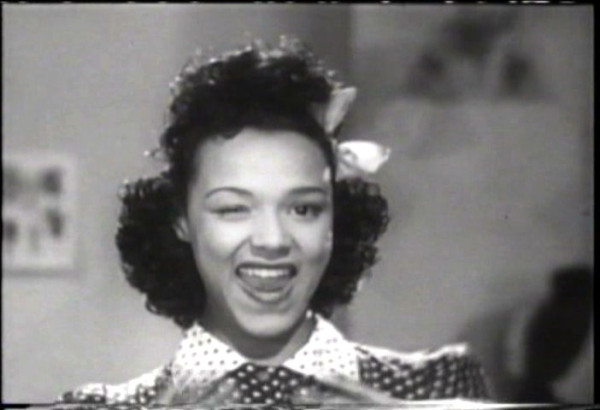

The Beginnings of Her Life
Dorothy Dandridge's early life was an experience. She was born on November 9, 1922 in Cleveland, Ohio. Her parents are entertainer Ruby Dandridge (1900-1987) and Cyril Dandridge (1895-1989). Her parents separated just before her birth. Ruby made a song and dance act for her daughters Dorothy and Vivian. Vivian and Dorothy were part of the child group called The Wonder Children. The act was managed by Geneva Williams. They toured the South for 5 years, while Ruby worked and preformed in Cleveland. It is said that Geneva Williams had a bad temper. By the time of the Great Depression, the family moved into Hollywood, California. Ruby worked on radio and film in small domestic servant parts. Dorothy Dandridge attended McKinley Junior High School in 1930. The Wonder Children were renamed the Dandridge Sisters in 1934. Dorothy and her sister teamed up with dance schoolmate Etta Jones. The Dandridge Sisters were strong for many years. They were booked in famous nightclubs like the Cotton Club and the famous Apollo Theater. Dorothy Dandridge's first on screen appearance was in a small part in an Our Gang comedy short called Teacher's Beau in 1935. She was in the 1936 The Big Broadcast as part of the Dandridge Sisters. They worked with Bill Robinson in that film. She was in the film A Day at the Races (in 1937) with the Marx Brothers, and It Can't Last Forever in 1937 with the Jackson Brothers. Nationwide, Dorothy Dandridge gained national recognition with her nightclub performances. Dandridge's first credit film role was in Four Shall Die (1940). This race film cast her as a murderer and did little for her career. She rejected stereotypical black roles. She had small roles in Lady from Louisiana with the racist John Wayne and Sundown with Gene Tierney (both in 1941). Dandridge appeared as part of a Specialty Number, "Chattanooga Choo Choo" in the hit 1941 musical Sun Valley Serenade for 20th century FOX. This film showed her for the first time performing with the Nicholas Brothers. Dorothy Dandridge was in many soundies. Soundies are film clips that were displayed on jukeboxes. They were Paper Doll by the Mill Brothers, Cow, Cow Boogie, etc. They films showed her singing and dancing plus acting abilities. Dorothy Dandridge were on plays and films all over the 1940's. Dorothy Dandridge was once married to one of the Nicholas' Brothers, and they had one daughter.

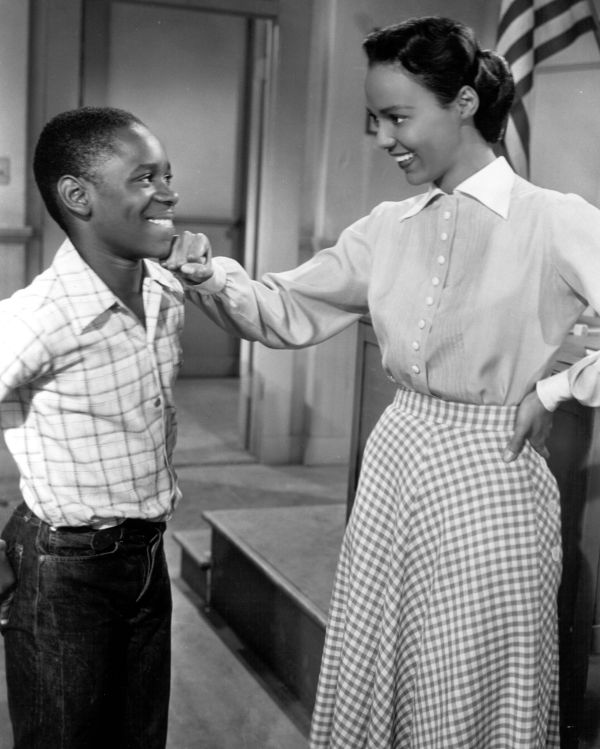
Her Early Career
She continued to appear occasionally in films and on the stage throughout the rest of the 1940s, and though performing as a band singer in some good company, Count Basie in Hit Parade of 1943 and Louis Armstrong, Atlantic City 1944 and Pillow to Post 1945. In 1951, Dandridge appeared as Melmendi, Queen of the Ashuba in Tarzan's Peril, starring Lex Barker and Virginia Huston. When the Motion Picture Production Code made people talk about the film's "blunt sexuality", Dandridge received considerable attention for wearing what was considered "provocatively revealing" clothing. The continuing publicity buzz surrounding Dandridge's wardrobe got her pictured on the April 1951 cover of Ebony. That same year, she had a supporting role in The Harlem Globetrotters (1951). In May 1951, Dandridge spectacularly opened at the Mocambo nightclub in West Hollywood after assiduous coaching and decisions on style with pianist Phil Moore. This success seemed a new turn to her career and she appeared in New York and at Café de Paris in London with equal success. In a return engagement at the Mocambo in December 1952, a Metro-Goldwyn-Mayer studio agent saw Dandridge and recommended to production chief Dore Schary that she might make an appearance as a club singer, in her own name, in Remains to Be Seen, already in production. Her acquaintance with Dore Schary resulted in his casting Dandridge as Jane Richards in Bright Road—her first starring role, projecting herself as a "wonderful, emotional actress"—which the trailer was to later promote. The film, which centered on a teacher's struggles to reach out to a troubled student, marked the first time Dandridge appeared in a film opposite Harry Belafonte. She continued her performances in nightclubs thereafter and appeared on multiple early television variety shows, including Ed Sullivan's Toast of the Town.
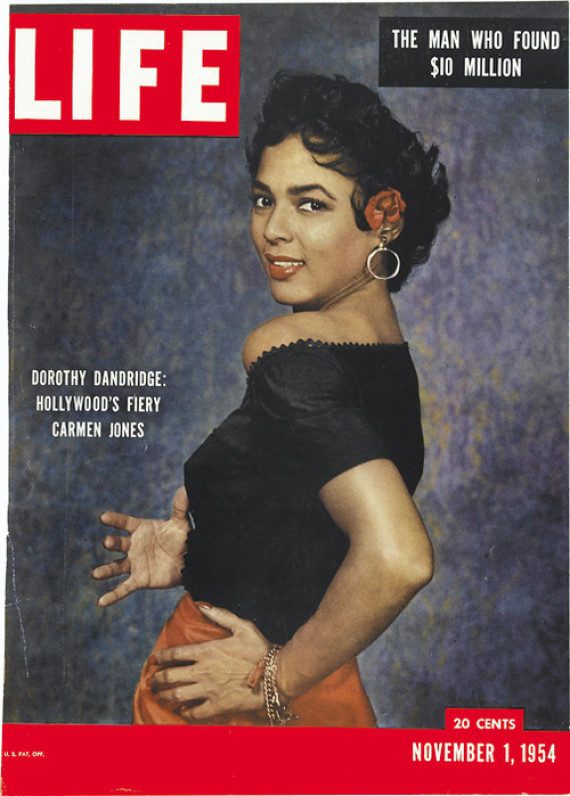

Carmen Jones
Dorothy Dandridge's role in Carmen Jones further solidified her legacy as one of the greatest actresses of all time. Back in 1953, a nationwide talent search came about as 20th Century Fox started to cast the all-black musical film adaption of Oscar Hammerstein II's 1943 Broadway musical of Carmen Jones. It came from Georges Bizet's opera Carmen updated to a World War II-era African American setting. Under consideration, but available to director and writer Otto Preminger to view for suitability was Dandridge's starring role from the previous year of the film Bright Road. Dorthy Dandridge had to fight for her role of Carmen. At first, Preminger didn't want Dandridge to play Carmen but the role of the quieter person Cindy Lou. Dandridge dressed down for her role in Bright Road. For Carmen Jones, Dorothy Dandridge worked with Max Factor to dress up for the part. She performed her case for the role of Carmen directly to the director Preminger in his executive office. Later, after giving appearances in the soundies material, Preminger gave her the role.
Many of the cast were like a Hall of Fame of African American actors, actresses, and singers like Pearl Bailey, Brock Peters, Harry Belafonte, Diahann Carroll, Olga James, Madame Sul-Te-Wan (born Nellie Crawford) and Joe Adams. Dorothy Dandridge was a singer, but the film wanted a more operatic voice. Dandridge's voice in the movie was dubbed by operatic vocalist Marilyn Horne. Carmen Jones opened to favorable reviews and a strong box office returns on October 28, 1954. It earned $70,000 during its first week and $50,000 during its second. Dandridge's performance as the seductive leading actress made her one of Hollywood's African American sex symbols. She earned positive reviews for her role. By November 1, 1954, Dorothy Dandridge was the first black woman featured on the cover of Life magazine. Carmen Jones was the worldwide success earning over $10 million at the box office and becoming one of the year's highest earning films.

Dorothy Dandridge was nominated for an Academy Award for Best Actress. She was the first African American nominated for a leading role. During the 27th Academy Awards, which was held on March 30, 1955, Dandridge shared her Oscar nomination with actresses like Grace Kelly, Audrey Hepburn, Judy Garland, and Jane Wyman. Although, Kelly won the award for her performance in The County Girl, Dorothy Dandridge was highly popular. During the 1955 Oscar ceremony, Dandridge presented the Academy Award for Film Editing to On the Waterfront editor Gene Milford. On February 15, 1955, Dandridge signed a three movie deal with 20th Century Fox starting at $75,000 a film. Darryl F. Zanuck, the studio head, had personally suggested the studio sign Dandridge to a contract. Zanuck had big plans for her, hoping that she would evolve into the first African American screen icon. He purchased the film rights to The Blue Angel and intended to cast her as saloon singer Lola-Lola in an all-black remake of the original 1930 film. She was planned to play Cigarette in the remake of Under Two Flags. Dandridge agreed to play the role of Tuptim in a film version of the King and I and a neighbor The Lieutenant Wore Skirts. Her former director Otto Preminger suggested that she accept only leading roles. By this time, Preminger was committing adultery against his wife by having an affair with Dandridge. Dorothy Dandridge was an international star. She rejected the two other roles and they were given to the famous Puerto Rican actress Rita Moreno. On April 11, 1955, Dorothy Dandridge was the first black performer to open at the Empire Room inside New York's Waldorf-Astoria hotel. Her success as a headliner led to the hotel to book other black performers like Count Bassie Orchestra with vocalist Joe Williams, Pearl Bailey, and Lena Horne. In 1957, Dandridge sued Confidential for libel over its article about an incident. This incident never happened and by May 1957, she received an accepted out of court settlement of $10,000. She also testified at the 1957 criminal libel trial of Hollywood Research, Inc., the company that published Confidential as well as all of the other tabloid magazines from that era. Dandridge and O'Hara's testimony proved that Hollywood Research committed libel at least twice against both women. By the late 1950's, she was in many roles.

Later Performances
Dorothy Dandridge's later performances would be ahead of its time. By 1957, after 3 years absent from film acting, she agreed to appear in the film version of Island in the Sun. I saw the film before in real life on TCM (Turner Classic Movies). The ensemble cast included people like James Mason, Harry Belafonte, Joan Fontaine, Joan Collins, and Stephen Boyd. Dandridge portrayed an Indian shop clerk who had an interracial love affair with a white man, played by John Justin. Back then, the film was controversial. The script was revised on many times to accommodate the Motion Picture Production Code requirements about interracial relationships. Censorship was worst back then than today. There was a romantic embrace in the film between Dandridge and Justin that succeeded in not breaching the code. Despite the behind the scenes controversy, the film had favorable reviews. It was one of year's best successes. Later, Dandridge agreed to star opposite German actor Curd Jurgens in the French/Italian production of Tamango in 1958. I saw parts of Tamango in real life too on YouTube before. Dandrdige was reluctant to play in this role. She decided to do it after learning that it focused on a 19th century slave revolt on a cargo ship traveling from Africa to Cuba. Yet, she almost withdrew her involvement when the initial script wanted her to swim in the nude and spend the majority of the film in a two piece bathing suit made of rags. When Dandridge threatened to leave the film, the script and her wardrobe was retooled to her liking. The United States Production code requirements didn't apply to the Italian film production. The passionate kiss between Jurgens and Dandridge's character was permitted in the shooting of Tamango. This gave Dandridge her first and only on screen kiss with a white actor. Tamango was withheld from American release until late 1959. It received mixed reviews from critics and achieved only minor success.

1958's The Decks Ran Red from MGM have Dandridge co-starred with James Mason and Broderick Crawford as Mahai's a cook's wife abroad abroad a large ocean liner where numerous deaths are arranged to take place. It had a respectable audience, and Dandridge had an unique wardrobe in the film. In late 1958, Dandridge accepted producer Samuel Goldwyn's offer to star in his forthcoming production of Porgy and Bess, which would become her first major Hollywood film in five years. Back in the day and today, the film Porgy and Bess has been debated. Some African Americans felt that the film was fine, but other African Americans felt that Porgy and Bess degraded and stereotyped black Americans. The director Rouben Mamoulian was replaced with Otto Preminger. Otto said that Dandridge needed intensive coaching to handle a role in Porgy and Bess. All of the sets and costumes were destroyed in a fire. They had to be replaced. It was worth almost $2 million. There were script rewrites and other issues. Production was long. The film was released in June 1959 with mixed reviews. It failed financially. In 1959, Dandridge was in the British thriller Malaga. She played a European woman with an Italian name. It co-starred Trevor Howard and Edmund Purdom. The film was about a jewel robbery and its aftermath. Dandridge kissed Howard in the film. It was released in theaters in 1960 and not released in America until 1962. Malaga was her final completed film appearance. In 1962, Dorothy Dandridge appeared as Anita in Highland Park Music Theater production of West Side Story. Yet, she only lasted 2 performances due to illness. In 1963, she struggled. Her popularity declined. She performed in nightclubs to pay offs debts from many lawsuits. She filed for bankruptcy. She was in seclusion before appearing as a lounge act in Las Vegas in 1964. In 1965, she wanted to revive her acting career. She signed a new contact in Mexico and was scheduled to appear as a woman lead in the film based on outlaw Johnny Ringo. Later, her end unfortunately came so early in her life.

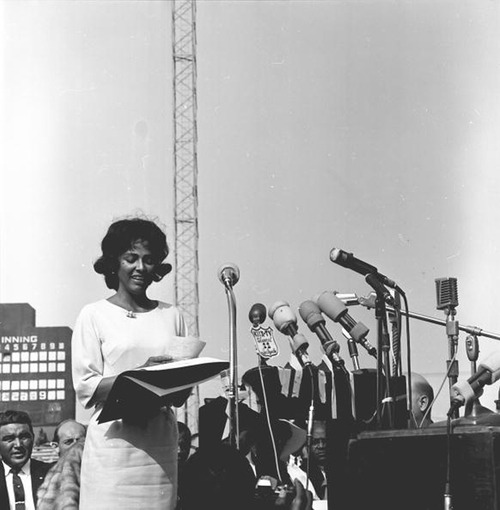
Social Activism
Dorothy Dandridge was a social activist. She experienced racism and discrimination in Hollywood and outside of Hollywood. She was a Democrat who supported the campaign of Adlai Stevenson during the 1952 Presidential election. She was involved with the National Urban League and the National Association for the Advancement of Colored People. She spoke in a Los Angeles rally with Dr. Martin Luther King Jr. to advocate for civil rights. The book from Dr. Emilie Raymond entitled, "Stars for Freedom: Hollywood, Black celebrities, and the Civil Rights Movement" (University of Washington Press) documented how many Hollywood stars were active in the Civil Rights Movement. People like Dick Gregory, Sidney Poitier, Ossie Davis, Ruby Dee, Sammy Davis Jr., and others inspired other people to go along with the agenda of the black freedom movement. After the McCarthyite movement, many Hollywood actresses and actors wanted to cut loose and express their political views more in public. Back in the day, African Americans struggled to be writers, directors, producers, and even camerapeople on sets. The older generation of black Americans had to literally fight for social change, and many people died for the rights that we have today. Many people like Dandridge and Poitier used their power and influence to make more future films about black people in a non-stereotypical fashion. We have a long way to go today, but we never forget the sacrifices of those of the past.

Her Passing
On September 8, 1965, Dorothy Dandridge spoke by the telephone with friend and former sister in law Geraldine "Geri" Branton. Dandrdige planned to fly to New York City to prepare for her nightclub engagement at Basin Street East on the next day. Branton told biographers that during the long conversation, Dorothy Dandridge veered from expressing hope for the future to singing Barbara Streisand's "People" in its entirety (to make the cryptic remark moments before hanging up on her). Her remark was "Whatever happens, I know you will understand." Several hours later, Dandridge was found naked and unresponsive in her apartment by her manager Earl Mills. A Los Angeles pathology Institute determined the cause of death was an accidental overdose of the antidepressant imipramine, while the Los Angeles County Coroner's Officer concluded that she died of a fat embolism resulting from a right foot fracture sustained five days previously. On September 12, 1965, a private funeral service was held at the Little Chapel of the Flowers. She was cremated, and her ashes are interred in the Freedom Mausoleum at Forest Lawn Memorial Park. Dorothy Dandridge was one of the most gorgeous, talented, and charismatic actresses of all time. Her courage is incredible, and her life was filled with ups and downs. Yet, we remember her life is a trailblazing black women whose legacy inspired future black actresses to express their gifts and light that comes from the Most High God.



Dorothy Dandridge's Legacy
Her legacy is extensive. One part of her legacy is the love for her child. Also, Dorothy Dandridge sacrificed her life in order for future African American actresses to achieve their dreams. When she lived, sexism and racism harmed her life. Today, these same problems exist. Yet, Dorothy Dandridge inspired our people to see that we have the right to show our greatness irrespective of obstacles. She helped to promote a non-stereotypical image of African Americans in film. Many actresses have praised Dorothy Dandridge's courage and inspiration like Cicely Tyson, Jada Pinkett Smith, Halle Berry, Janet Jackson, Whitney Houston, Kimberly Elise, Loretta Devine, Tasha Smith, and Angela Bassett. Halle Berry in 1999 produced and starred in the HBO movie Introducing Dorothy Dandridge. I have watched the movie before on VHS before. Halle Berry won the Prime time Emmy Award, Golden Globe Award, and Screen Actors Guild Award. It was an excellent movie. She later won an Academy Award for Best Actress. She praised Dorothy Dandridge, Lena Horne, and Diahann Carroll after receiving her award. We celebrate Dorothy Dandridge's legacy and life as a way for us to do our part in making the world better.
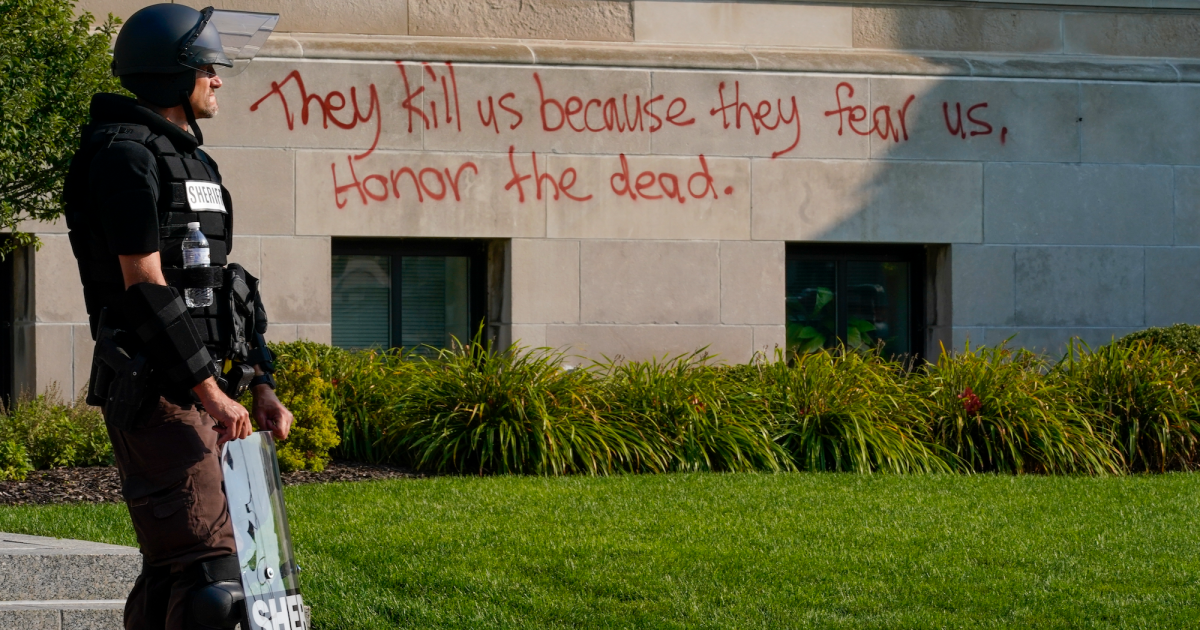
Conclusion (for the Fall of 2020)
We know about the real Ella Baker, but many folks don't know. Ella Baker was a woman of the South. She was a black woman who used honesty, courageousness, and activism to eliminate not only Jim Crow apartheid. She wanted poverty to be gone too. She knew sharecropping and saw first hand of the economic exploitation of black workers in the Deep South. When she was young, she accepted the usage of communal, community power in building up the grassroots members of the overall black freedom movement. That is why Baker believed in humility and many socialistic principles of the redistribution of society's wealth from the rich capitalists to the poor and working class. He was a friend to the activist George Schuyler during the 1930's. Baker worked with the YNCL and used cooperatives to economically help the oppressed. Many black scholars like W.E.B. DuBois wanted black cooperatives as a means to make socialism more thoroughly inits existence. Ella Baker was one of the Mothers of the Modern Day Civil Rights Movement. She mentored SNCC, Kwame Ture, Julian Bond, Rosa Parks, and Ruby Dee. In 1974, at a Puerto Rican solidarity rally, Ella Baker said the following words, "You and I cannot be free in America or anywhere else where there is capitalism and imperialism." Enough said. Ella Baker was always a revolutionary black woman. The real shame is that the 2020 Democratic National Convention allowed Michael Bloomberg to speak, but not Ihan Omar or Ayanna Pressley or Rashida Tlaib. He had more time than Alexandra Ocasio-Cortez. Trump should be voted out off office on November 2020, but we should have legitimate critiques of any politician.
Days ago was 57 years after the 1963 March on Washington. On that day (on August 28, 2020), many protesters are at the Lincoln Memorial to protest police brutality, racial injustice, and oppression in general. Many people are right to mention the fact that poverty, health care disparities, and unjust police conduct are acts of violence against human beings. We know of the sociological proofs of economic and racial disparities involving the criminal justice system, education, health care, and the wealth gap. That is why moderate prescriptions won't solve these problems. Only structural, revolutionary change is the necessary solution to eliminate structures of oppression. The deaths of Breonna Taylor, George Floyd, and other black people outline the pure reality that black lives aren't respected by many quarters of American society. John Lewis peacefully protested 65 years ago and still being brutalized by the police proves that respectability politics won't eliminate police misconduct. The 1963 March on Washington was not only about fighting to end Jim Crow apartheid (which ought to be gone, because it is unjust for the government to force people against their wills to experience second class citizenship). The proposals of the 1963 march wanted a living wage, an end to police brutality, fair education, investments to end poverty, and developing workers' rights. Dr. Martin Luther King Jr. and other people (like John Lewis, Cleveland Robinson, Bayard Rustin, Daisy Bates, Anna Arnold Hedgeman, A. Philip Randolph, etc.) were involved in creating the march in the first place.
The 1963 March on Washington showed how grassroots organization can work to confront injustice. Dr. King's I Have a Dream speech proclaimed not only the dream but a condemnation of how society functions. It was about how society was insufficient in dealing with the blatant oppression that black people were going thorough. Many women were in the march, but some women were fortunately restricted to speak. Even John Lewis was told to moderate his speech about the Kennedy administration. Lewis did it out of respect for A. Philip Randolph. Randolph wanted to have a March on Washington back in the 1940's, but FDR promised changes in confronting discrimination policies during WWII. Today, in 2020, the March on Washington certainly allows people to focus on how class oppression, racial injustice, and other evils still plague the world. Martin Luther King III and her daughter spoke powerfully and eloquently on their goal to make liberty real socially and economically. They oppose gun violence and police brutality too. As Dr. King moved more into the left before his passing, many of the establishment (including some moderate/conservative civil rights leaders plus far right extremsits like Reagan) criticized him for his anti- Vietnam War stance and his promotion of the Poor Peoples's Campaign (which was a multi ethnic movement for the fundamental ending of poverty in the world). Today, we are still witnessing violence like the man Jacob Blake being shot 7 times. That is why we want a stronger 1965 Voting Rights Act, and the fundamental creation of the Dream made real for all.
The Republican National Convention had speakers on Monday who tried to convince people to vote for Trump. One person who disappointed me was Herschel Walker who believes in the lie that Trump isn't a racist. Trump said that a Mexican American judge can't judge a case fairly because of his Mexican heritage. That is racist. Trump has defended the Confederate statues and Confederate flags. That is racist. Trump has also said that Maxine Waters has low IQ, and he doesn't want low income people to travel into the suburbs. Also, Trump wanted the death penalty for the Central Park Five when they are innocent human beings. He was sued for racial discrimination involving housing back in the 1970's. We are not better off than we were four years ago. We have millions of people unemployed, over 170,000 people dead (in America) because of the coronvairus, and many police officers executing police brutality without real accountability.
One speaker saying that Trump is the bodyguard of Western civilization is a coded phrase. We know exactly what that comment means. The Republican speakers accused progressives of destroying the country of America, eliminating guns from law abiding citizens, controlling how people live, eliminating the freedom of speech, and desiring anarchy to reign in society. These are of course all lies made by Donald Trump Jr. and Guilfoyle. The speakers omit that police unions have a vested interest to not create progressive change involving policing. Nikki Halley said that America is not a racist country which is not only a lie but it omits history. Jim Crow, the growth of white nationalism, slavery, and the infiltration of some of the police with white racist groups prove that America is a racist nation. Nikki Haley is wrong to support the ending of the Iranian nuclear deal. Kimberly Guilfoyle is from FOX News, and we know how FOX News has promoted Trump for years overtly. The GOP is clear about what they stand for. They stand for voter suppression, hatred of immigrants that don't look a certain way, vulgarity, hypocrisy, and corporate capitalism.
By Timothy

